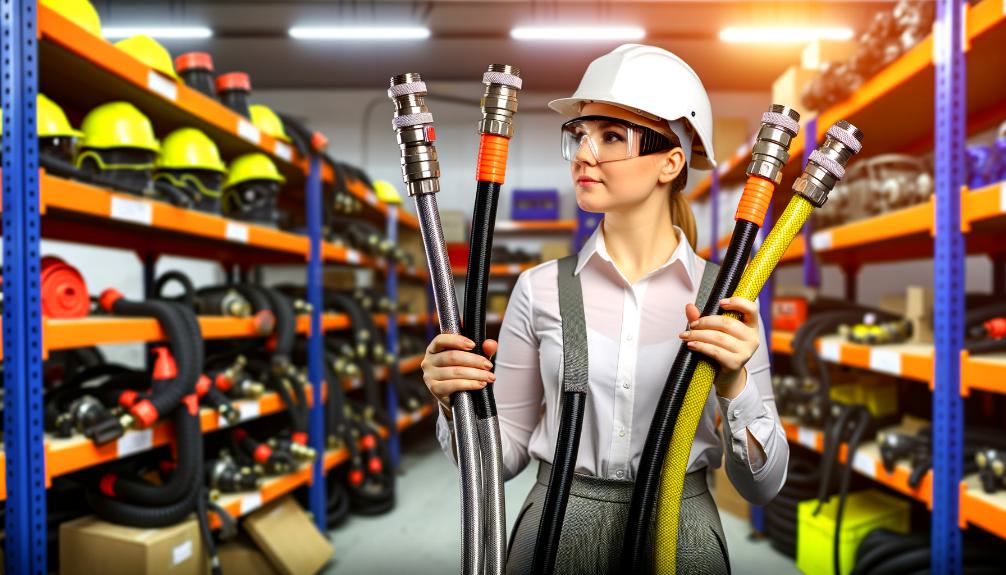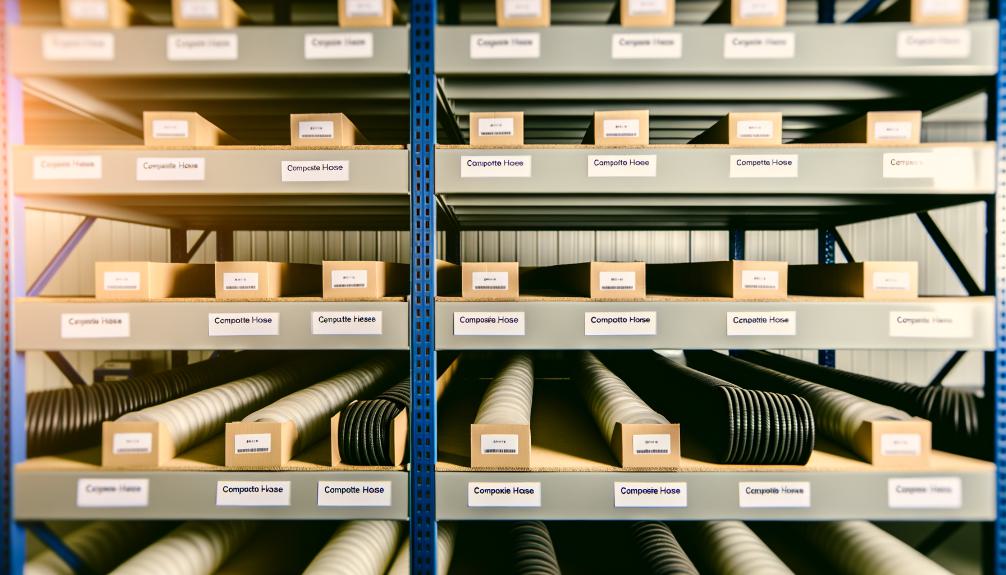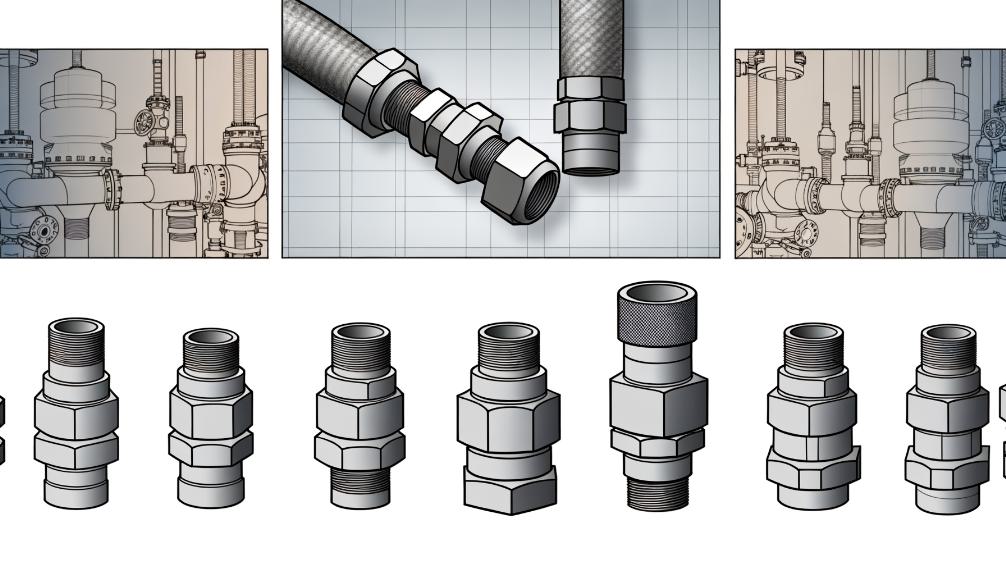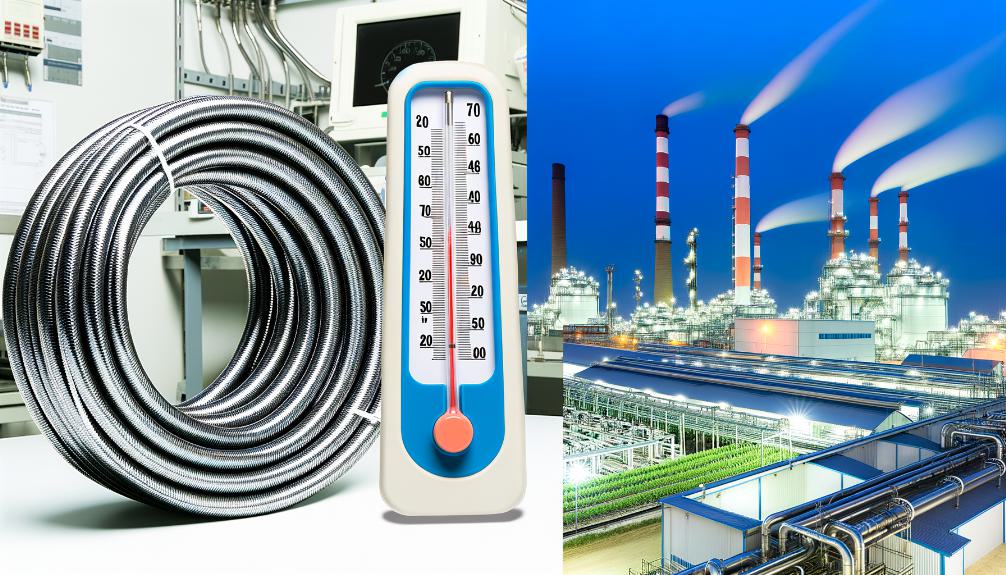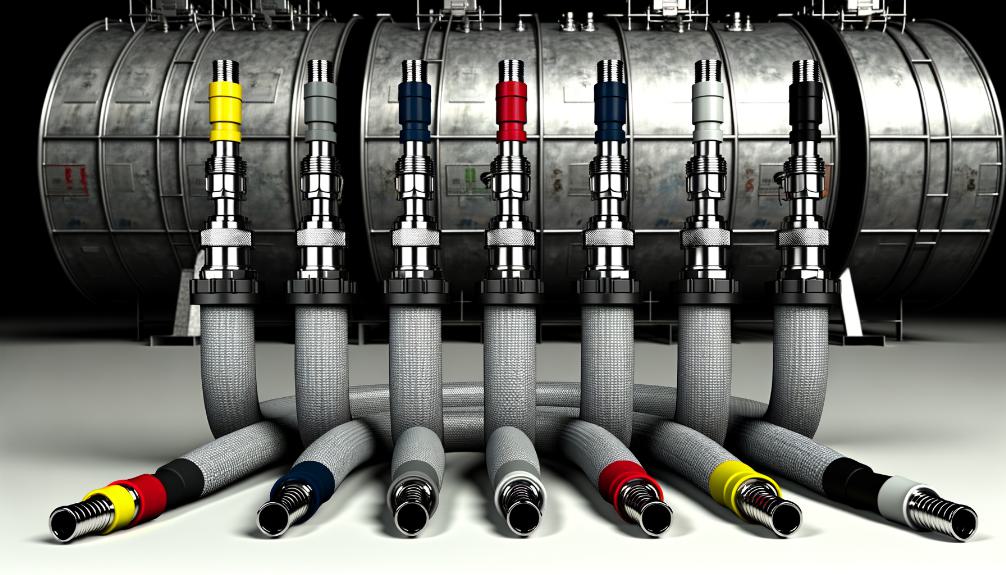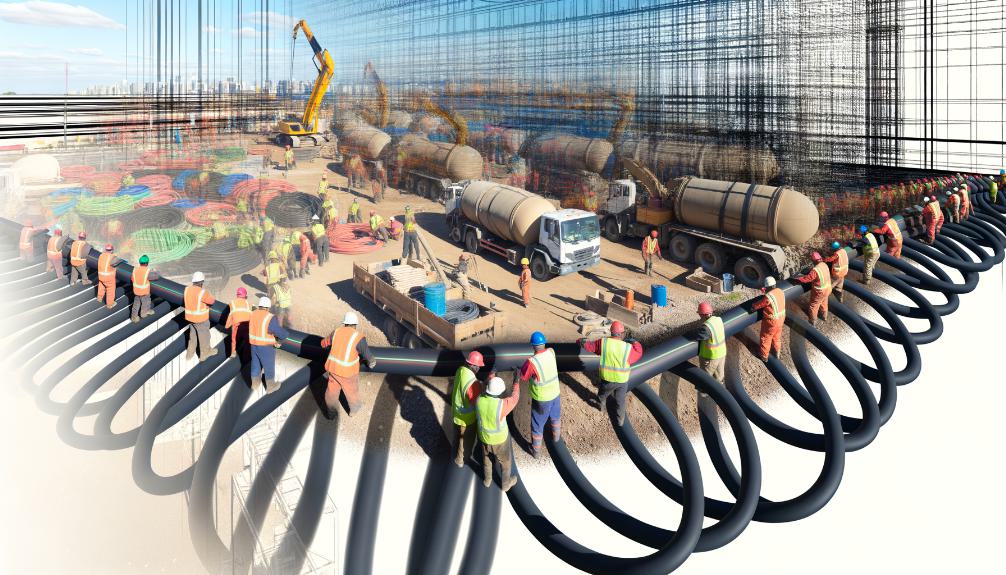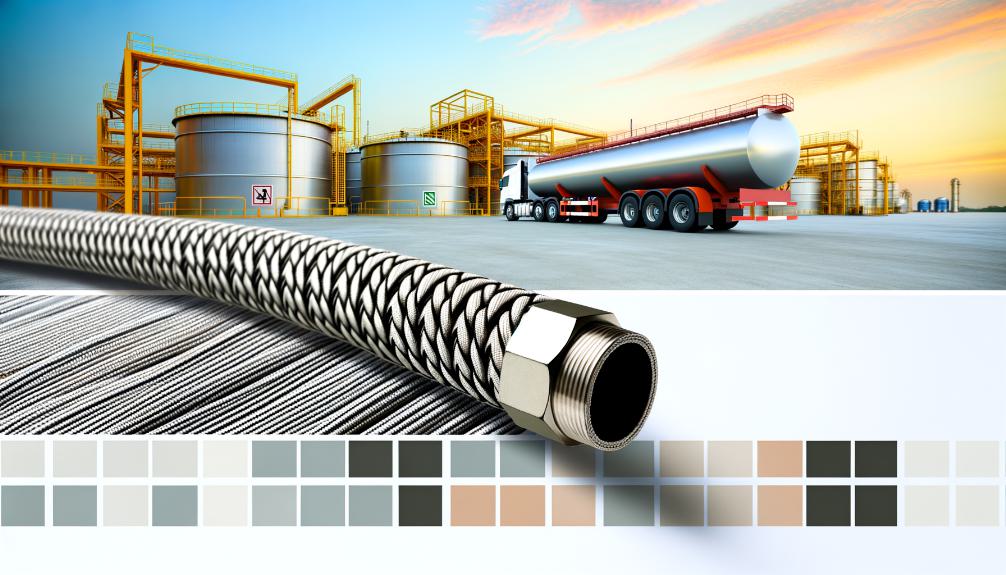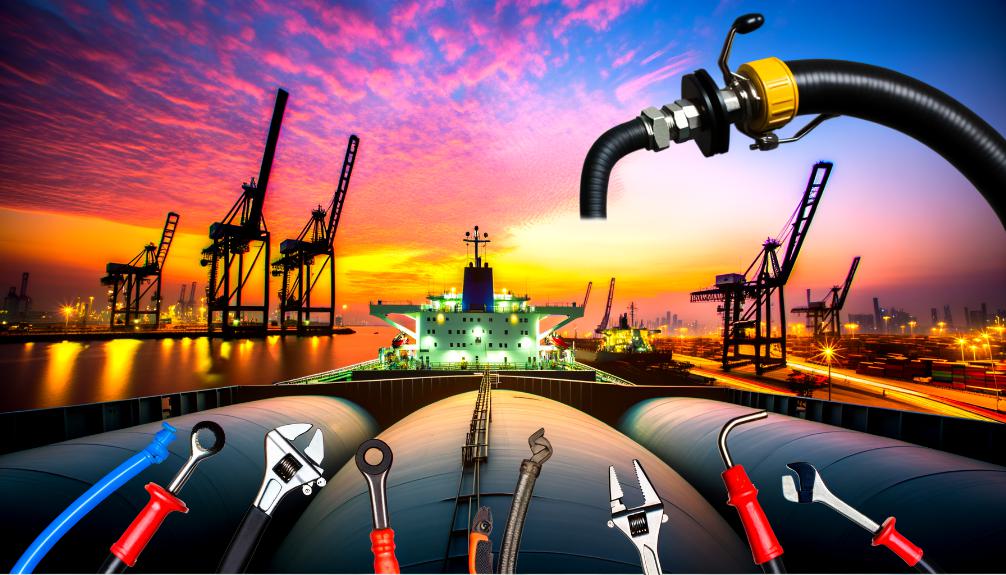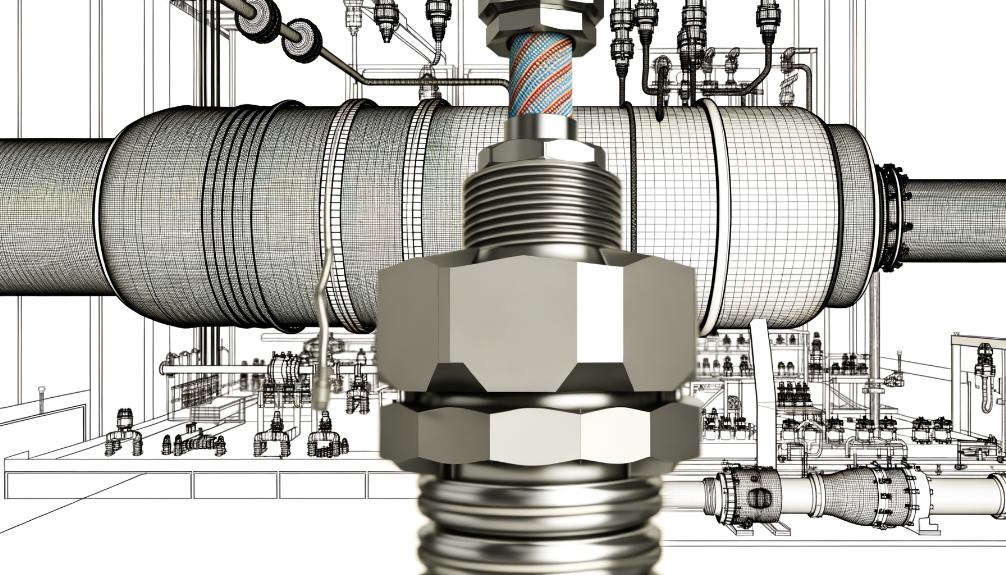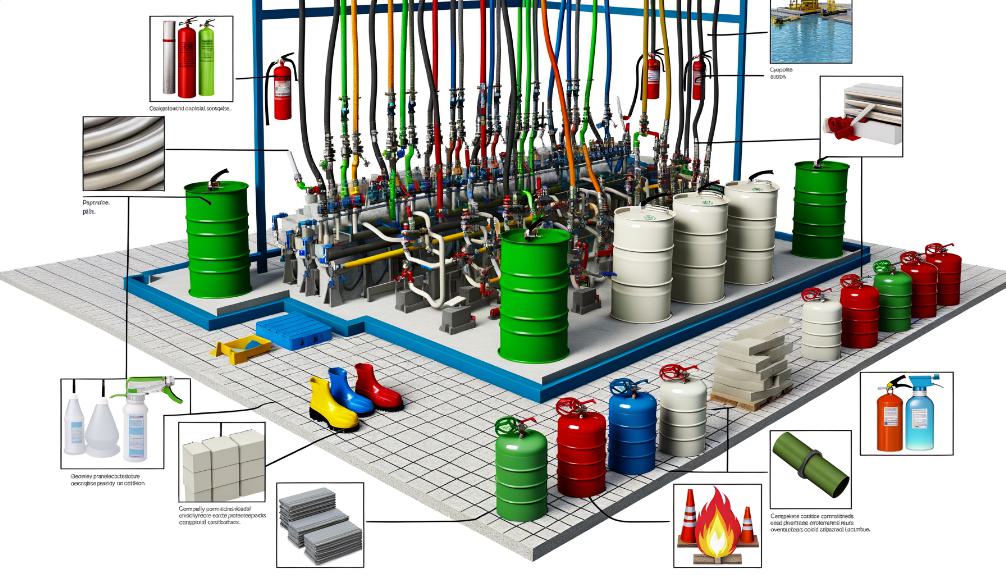To enhance composite hose safety, you should consider obtaining certifications such as ISO 9001, ATEX, and API Spec Q1. ISO 9001 guarantees reliable quality management practices, emphasizing continual improvement and customer satisfaction. ATEX certification is vital for safety in explosive atmospheres, aligning with stringent European Union regulations and enhancing marketability. Meanwhile, compliance with API Spec… Continue reading Top Certifications for Composite Hose Safety: 3 Tips
Category: Composite Hoses
Top Tips for Storing Composite Hoses Effectively
To effectively store your composite hoses, start by choosing a spacious, dry, and well-ventilated area to avoid moisture and biological threats. Prioritize cleaning both the interior and exterior surfaces using compatible solutions, followed by a thorough rinse and air drying. Employ correct coiling techniques, adjusting the coiling radius according to the hose's characteristics and supporting… Continue reading Top Tips for Storing Composite Hoses Effectively
Top 3 Fittings for Composite Hose Applications
For your composite hose applications, you'll typically use Camlock couplings, flanged fittings, and dry break connections. Camlock couplings offer a vital, secure connection without the need for tools, suitable for quick changes, and come in various materials like stainless steel and aluminum, guaranteeing compatibility. Flanged fittings are ideal for high-pressure scenarios, requiring precise bolt tightening… Continue reading Top 3 Fittings for Composite Hose Applications
3 Best Temperature Ranges for Composite Hoses
When you're working with composite hoses, it's crucial to match the hose to the right temperature range for best performance. For low-temperature applications, they're flexible down to freezing, making them ideal for transporting liquefied gases. In moderate temperatures, ranging from 5°C to 100°C, their chemical and thermal stability shine, supporting a variety of industrial applications.… Continue reading 3 Best Temperature Ranges for Composite Hoses
Top 5 Composite Hoses for Chemical Resistance
When selecting top composite hoses for chemical resistance, you need to prioritize materials, construction quality, and brand reputation. Flexaust and Pacific Echo stand out for their durable construction, while Kanaflex and Uni-Chem lead with cutting-edge technology. Tudertechnica is notable for its high temperature and pressure capabilities. Assess the chemical compatibility particularly with the specific chemicals… Continue reading Top 5 Composite Hoses for Chemical Resistance
7 Benefits of Composite Hoses in Flexible Construction
Composite hoses offer remarkable advantages in flexible construction. You'll find they possess enhanced durability and strength due to their layered structure, which resists wear and increases longevity. Their superior chemical resistance means they can handle various substances without corroding, thereby reducing your maintenance costs. These hoses are also lightweight and flexible, easing installation in tight… Continue reading 7 Benefits of Composite Hoses in Flexible Construction
Why Should You Use Composite Hoses for Petroleum Transportation
You should use composite hoses for petroleum transportation because they're uniquely designed to handle the demands of this task. Their layered construction of thermoplastic and fabric enhances both flexibility and durability, reducing handling time and the risk of kinking. They're also lightweight, which lowers fuel and operational costs considerably. Additionally, they offer excellent chemical resistance,… Continue reading Why Should You Use Composite Hoses for Petroleum Transportation
Advantages of Composite Hoses in Oil Transfer Applications
In oil transfer applications, you'll find that composite hoses offer significant advantages. Their multi-layer construction provides superior flexibility, allowing for severe bending without damage. They're also lightweight, which eases installation and reduces strain on your system. Safety is enhanced with built-in fire resistance and pressure monitoring systems, enabling quick responses to pressure changes and preventing… Continue reading Advantages of Composite Hoses in Oil Transfer Applications
Why Are Composite Hoses Effective for Leakage Prevention?
Composite hoses are highly effective in preventing leaks due to their specialized multi-layered structure. These layers include chemical-resistant materials like polypropylene and polyamide, reinforced with steel or polymer wires. This design not only enhances flexibility but also guarantees durability against mechanical stress and chemical exposure. The careful layering and construction reduce the risk of permeation,… Continue reading Why Are Composite Hoses Effective for Leakage Prevention?
Top Composite Hoses for Safe Chemical Transfer
When selecting top composite hoses for safe chemical transfer, you must consider material compatibility, durability, and operational specifications. Opt for hoses with Polytetrafluoroethylene (PTFE) or rubber blends for chemical resistance and flexibility. Confirm that the hose withstands your specific chemical applications through rigorous corrosion and abrasion testing. Fittings should match the chemical compatibility and size… Continue reading Top Composite Hoses for Safe Chemical Transfer
